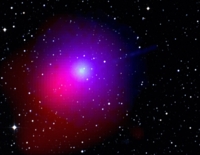Stargazers Can Get A Glimpse Of Newly Found Comet ‘Lulin’
 Local astronomers said that the best chance to see a green-tinged comet named ‘Lulin’ will be tonight and Tuesday night.
Local astronomers said that the best chance to see a green-tinged comet named ‘Lulin’ will be tonight and Tuesday night.
Observers said that this space oddball is moving nearer to the Earth, and will be visible to the naked eye as a faint (magnitude +5.6) gassy patch in the constellation Virgo before dawn.
Initially discovered by a Chinese teen just over a year ago, ‘Lulin’ is making its possibly first and last flyby of Earth this month, moving from the outermost edges of the solar system around 18 trillion miles away.
Stargazers get a quick look of the frozen ball of ice and dust hurtling across the night sky, with the help of binoculars or a telescope.
However, ‘Lulin’ might only look like a dim, fuzzy star to the naked eye.
Erika Gibb, assistant professor of physics and astronomy at the University of Missouri-St. Louis said, “While comets are notoriously unpredictable, it is estimated that it should be bright enough to be seen by the naked eye after mid-month, if you are under a dark sky.”
“It is gradually getting higher in the sky, so that it will rise around midnight near Feb. 24. After that, it will continue along its path in the sky, getting fainter as it heads to the outer solar system,” Gibb added.
The gases that constitute its atmosphere, i.e. diatomic carbon and cyanogen Lulin gives ‘Lulin’ its green color.
“When sun shines on these molecules, they glow,” Gibb said. “"Cyanogen glows green. I think it's important to mention that this gas doesn't pose a problem for us. When we went through the tail of Halley's comet, a lot of people worried they were going to die from poison gas.”
A NASA satellite using X-rays show the comet is quite active, shedding over 800 gallons of water every second as it moves nearer to the sun.
By mid-March, Lulin will fade out of view when it moves to the shady depths of the external solar system.
Around midnight Monday night, the comet will be as near to Earth as it will ever get.
To check out the comet, first find Saturn and then look south, or slightly southwest.